How to pull a sofa with your own hands
Any thing eventually deteriorates and upholstered furniture is no exception. But in the case of furniture, it is possible to restore its original appearance and properties. This article will discuss how to do it yourself. How, what and in what order to do, what materials to use.
The content of the article
- 1 Damage and types of repair
- 2 Types of the "soft part"
- 3 We disassemble the sofa and evaluate the scale of work
- 4 The classic spring block sofa pie and possible problems
- 5 The device of the sofa on the springs "snake" and options for its restoration
- 6 An example of a sofa repair with step by step photos
Damage and types of repair
Damage to a sofa or other upholstered furniture can be of different "severity". Depending on the existing injuries, a different set of work is required. Here's what could be with your furniture:
- Only the fabric has fallen into disrepair (the cats broke on the armrests, for example), i.e. there are no dips in the soft part and protruding parts. Then everything is more or less simple and you can do with replacing the upholstery fabric.
- In some places there are pressed places... This damage is caused by wear on the components that make up the soft part of the sofa. Depending on the degree of damage and the design of the sofa itself, it may be necessary to replace the padding polyester and other underlying layers. In more severe cases, repair of spring blocks, if any, or foam rubber / silicone if the sofa is spring is required. If the upholstery looks decent enough, it can be washed and reused.
- Failure at the bottom of the seat... Sometimes, due to high loads, the springs pierce the bottom of the frame. This most often happens if it is made of fiberboard. In this case, you will have to disassemble everything, remove the spring dock, replace the fiberboard (preferably with plywood).
- Damage to the frame... One of the most unpleasant things is cracks in the frame bars. The sofa will have to be completely disassembled, the broken bars should be replaced, then everything will have to be restored. This is a complete banner of the sofa. Basically, you are assembling a new one.
So stretching the sofa can involve different jobs. From a simple upholstery replacement to a complete renovation including part of the frame. The most troublesome part is the spring blocks. This is a long and painstaking work. If the "historical accuracy" of your furniture is not important to you, it is easier to replace a failed spring block with foam rubber or (better, but more expensive) furniture silicone. If done correctly, the sofa will become even more comfortable: incorrectly tightened springs cause a lot of inconvenience.
Types of the "soft part"
In general terms, let's talk about what the seat and back of the sofa can be made of. There are options:
- Without springs:
- Foam rubber (polyurethane foam, the name of polyurethane foam is also found) of high density (also called furniture).
- Foamed latex. In terms of quality and convenience, it is better than foam rubber, but also much more expensive.
- With springs:
- with classic springs tied into one block;
- snake springs that support the foam / latex filling.
These are the most common types of sofa seats. In more expensive models, the spring block can be supplemented with a layer of polyurethane foam or latex, which makes the seat more elastic and comfortable at the same time. When tightening, then they look at the state of both parts, replace or leave - depending on the desire and capabilities.
But these are not all layers. In addition to springs, polyurethane foam / latex, a synthetic winterizer or thermal felt (or ordinary felt) is also laid. This is if the sofa is more or less modern and not too expensive.Older exhibits may contain matting or burlap, batting (or something very similar), horsehair, dried seaweed and other now almost exotic materials for padding the sofa. When repairing a sofa, they will need to be replaced with the same (if there is a desire to search) or similar in thickness and properties. So, in order to understand how the banner of the sofa should be done, first figure out what is inside it.
We disassemble the sofa and evaluate the scale of work
Stretching the sofa begins with its disassembly. In the process, you will be able to assess the extent of the damage and decide what exactly you need to do. For this part of the job, you will need:
- a large screwdriver to unscrew the visible bolts (if any);
- a small flat-blade screwdriver, pliers, or staple remover - to remove the staples that secure the upholstery.
Actually, that's all. First, remove individual pillows, if any, remove the sidewalls. It is difficult to tell here - there are many designs. Look carefully to see if you find something. If you have sliding parts, you can try to start with them.
Detaching the upholstery
The next step is to separate the fabric from the frame. It is attached with staples to the timber frame bars. Hook the staples with a flat screwdriver, take out. Some can sit very tightly, it is easier to pull them out by grasping the raised back with pliers or pliers.
We remove the fabric carefully, trying not to damage it too much. We then use it as a sample for a new sofa upholstery. There are several layers under the upholstery fabric. Maybe felt, synthetic winterizer, some kind of fabric. If the repair of the sofa was started only for the sake of replacing the upholstery, look at the condition of these materials. If there are signs of wear, it is best to replace. After all, it will be a shame if, after a few months, the sofa's constriction is required again, but already due to the fact that the layers of the lining have been demolished.
Once the fabric has been removed, it's time to evaluate which parts you will need to change. Everything is clear with the upholstery and lining. It is advisable to keep the pie in the same composition. If old materials were used that are not on sale now or they are too expensive, replace them with modern counterparts. The main thing for folding sofas is to reach the same height of the seat and backrest, which were before, since the folding mechanisms are designed for certain parameters of the "pillows". In order not to be mistaken with the thickness of the materials, find the unworn (or least worn) areas and measure the thickness.
We estimate damage
This stage is necessary if the seat of the sofa is uneven, there are humps and depressions, protruding springs (and from the bottom too). In seats, which consist only of foam rubber, everything is simple: they usually go for replacement. They can be made of high-density foam by folding several layers, you can order ready-made foam rubber in a store selling furniture spare parts. It is prudent to order a latex mattress according to the exact measurements (measured after the fabric and all layers have been removed).
If there are springs in the sofa, removing all the covering layers, we get to them. If there are no burst springs, the frame and its connections are strong, without backlash and cracks, the substrate for the springs is in good condition, you can stop there. We change the covering layers, sew a new cover, stretch and fasten. This completes the stretching of the sofa.
- One of the common defects in spring blocks is a broken spring.
- There are also such sofas - with spring snakes, which are attached to the frame and give elasticity to the foam mattress standing on top.
- Such breakage of the sofa is also common: the fiberboard on the frame is broken
- Examining the spring block for broken springs
If there is any damage from the above, the spring block will have to be separated. It is attached to the frame with U-brackets or nails.Now you have completely disassembled your sofa into its components. Further - replacement and repair of damaged parts, and then reassembly.
The classic spring block sofa pie and possible problems
To understand how to repair a sofa at home, you need to know which layers of materials and in what sequence are needed. For example, in a sofa seat with a spring block, the sequence will be as follows (from bottom to top):
- Frame made of plywood or timber... The plywood frame is more reliable, but it is longer and more difficult to make. Therefore, pine blocks are usually used. They are connected according to the thorn-groove principle, gluing the joint with wood glue. If desired, the connections can be reinforced with dowels or corners (aluminum).
- Spring block base... There may be options: lamellas (strips of elastic material), fiberboard, plywood. The most budgetary option is fiberboard, the most expensive is lamellas. The lamellas are mounted on special stops (lat holders). When using plastic stops, there is a possibility of breakage. At the same time, low-quality lamellas can bend (in a normal state they are bent slightly upward) or break - to reduce the cost, they are often placed across a large gap. All this leads to the fact that the sofa seat is pressed through. Instead of wooden slats, snake springs can still stand. They also have sufficient elasticity, but cost less. The problems with them are the same.
- The spring block itself... The block can be with independent or dependent springs. The former is cheaper, the latter supports the body well. Such mattresses are also called orthopedic.
- Felt or thick fabric (teak, another similar dense fabric will do). This layer is needed so that the springs do not push the foam rubber located above.
- This is how the slats look from below
- If the fabric is thin, it will tear, then the foam rubber will begin to crumble. But this is not the saddest thing - the lamellas bent in the opposite direction. In normal condition, they should be curved up
- The use of a corsage tape allows you to redistribute the load
- Polyurethane foam (PPU, foam rubber - all names of one material). Special dense foam rubber is used. If you choose, in addition to density, look at such an indicator as the durability coefficient - the higher the number, the better (and more expensive). This indicator shows how long the foam rubber will restore its original shape after removing the load. Its thickness is taken from the original, factory cake. It is possible to make it thicker without restrictions only on upholstered furniture that does not unfold (bench, sofa, armchair).
- Sintepon... It is necessary so that the fabric does not "wash" the PU foam. It is usually glued to a layer of foam rubber so that it does not fold into folds during operation. The glue is taken in a spray can.
- Upholstery fabric... The best are tapestry, chenille. They do not crumble, it is easy to sew from them. Flock and jacquard are not bad fabrics, but some of them "creep" at the seams. Therefore, when sewing, the seams must be strengthened. By the way, it is better to sew upholstery for a sofa with special Tytan threads. Regular ones, even thick ones, will tear quickly.
These are all layers and their features. You can add something (for example, a double layer of padding polyester), remove it - it is highly undesirable.
The device of the sofa on the springs "snake" and options for its restoration
Springs "snake" in expensive models are used as an additional means to increase elasticity. In budget models, a foam block can fit on this basis. They are attached to a wooden or metal frame across the seat - each spring separately. The installation step depends on the planned load. If your sofa begins to sag, or the springs have lost their elasticity, or are broken, it is treated with a replacement.
- The spring supports the materials on top with its elasticity
- This is how it looks in disassembled form.
- An expensive imported sofa is also made on a snake
To increase elasticity and extend the life of the sofa, the number of "snakes" can be increased when the sofa is stretched. Another option is transverse reinforcement with rigid corsage ribbons (which are used for straps on bags, backpacks).
The tape is nailed from one side to the frame. Professional furniture makers then tighten it with a special tool, but you can replace it with a regular bar wrapped around in the middle with coarse-grain sandpaper. Wrap a couple of turns of the tape on this bar, pull with both hands (make sure that the frame does not bend), fix the tape with staples or nails, release and cut off the excess. The same method is also suitable for extending the service life of a slat mattress.
An example of a sofa repair with step by step photos
The old sofa became completely uncomfortable, began to fall in places and creak. There is no way to buy a new one, it was decided to drag and change the upholstery. As usual, stretching the sofa begins with disassembly. The legs were removed first. The railing was attached to two large bolts, they were unscrewed and removed without any problems. It is also easy to disassemble further - in turn, we unscrew the emerging bolts.
When all the components were separated, they removed the old upholstery. The brackets were easily removed - the frame was made of pine timber. The spring block itself turned out to be free of defects, but there was a crack in the frame, one of the frame beams led, the fiberboard sagged, although there were no cracks.
Frame repair
Since the frame carries the main load, it is better to replace damaged elements. We carefully measure them, draw them schematically, put down dimensions in millimeters. With the drawing we go to the carpentry shop. Pay special attention: the wood must be dry, preferably chamber drying. If you know how to work with wood yourself, you can do it yourself.
It was decided to connect the frame, as it was, on the spike / groove, having coated it with wood glue. But so as not to be loose, the connection was reinforced with metal dowels.
First, the joints are glued, clamped in a vice. A small diameter hole is drilled under the dowel, the dowel is nailed down. The frame is in a vise until the glue dries.
We will use 4 mm plywood as the basis for the spring block. The sheets are standard, a little more than 1.5 meters, and the length of the sofa is almost two. It turns out to be two pieces. It is better to make the joint of the pieces on the jumper, it is more reliable. Cut out rectangles of the required size, coat the frame with wood glue, lay the plywood, nail it down with small nails. The length of the nails - so as not to stick out from the outside of the frame. We additionally support the joint with a bar (50 * 20 mm).
The updated sofa will serve in the country, so we try to keep the budget as small as possible, we use an old blanket instead of a spring pad. We stretch it well, fasten it with staples using a manual construction stapler.
If possible, it is advisable to put a thermal felt here. It is more reliable and not that expensive. It is cut out to size, straightened and nailed around the perimeter. You can use staples or studs with large caps.
We repair and fix the spring block
Powerful U-shaped brackets can be used to secure the spring block, and it is better if their legs are sharpened. But the stapler does not work with such, therefore, staples were cut from steel wire with a diameter of 1.5 mm, we hammered in with a hammer.
In addition to fastening to the frame, the springs are also fixed with nylon constrictions. Twine was taken, folded in two layers, secured with the same wire staples. We tighten the padding so that it does not press down on the springs, but the tension must be sufficient so that the block does not "move".
A dense material should be placed on top of the springs, usually felt. In this case, an old floor covering was used. Something like felt. It is quite dense and durable. Fold in two layers, cut to size. This layer must be attached to the spring block. The coating is dense, you can't pierce it with a needle, even a gypsy one. A large diameter awl will do, but it's not there. We pierce the coating with a nail, which we push with the handle of a screwdriver. We pass a thick thread through the holes. The stitch pitch is about 3.5 cm. To speed up the process, we use several nails at once.
Further "according to plan" should be foam rubber, on top of which a synthetic winterizer is placed. In this project, it was replaced with two layers of densely elastic material that had been stored in the attic for a long time. Another old blanket was used instead of padding polyester. To prevent the blanket from traveling, it was tied around the perimeter with threads (in conventional technology, the synthetic winterizer is glued to the polyurethane foam or latex using glue from a can).
Cover and wrap
It turned out to be easy to sheathe this sofa: the shape is simple, without decorations. The old cover was ripped open, a pattern was made on it from a new, not very expensive upholstery fabric. In the place that falls on the corner of the sofa cushion / seat, a thick tape was sewn from the inside out - so that the fabric would not rub. The fabric is inexpensive, so the edges had to be tucked up so as not to crumble. They are often left untreated.
The finished cover was laid out on the floor, and the restored part of the sofa was laid in it. At this point, it is important that the fabric is stretched evenly and not wrinkled. Began to nail the cover from the middle, moving to the edges. Used staples with thick backs - so as not to damage the fabric.
The back of the sofa was restored in the same way, the armrests were fitted, then all the parts were screwed to the folding mechanism. The thickness of the pillows matched, so there was no problem.
According to the test results: the seat turned out to be harsh, but for a tired back it is the most it. For home, of course, it is better to put foam rubber, and for lovers of comfort - latex.

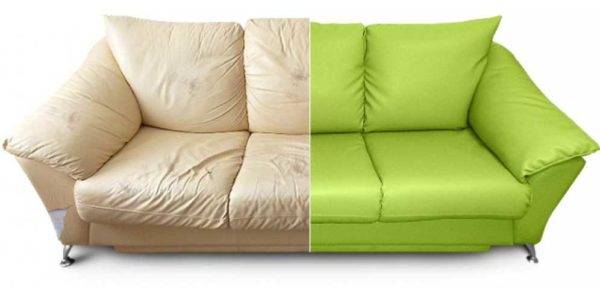
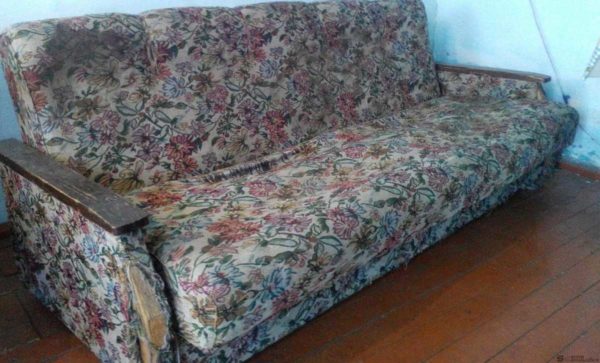
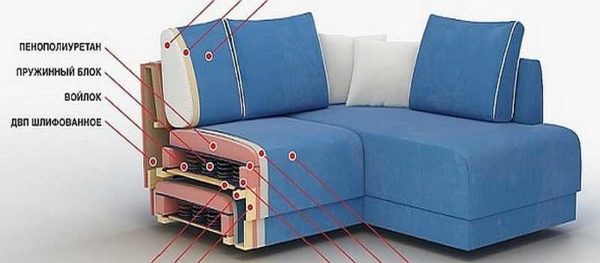
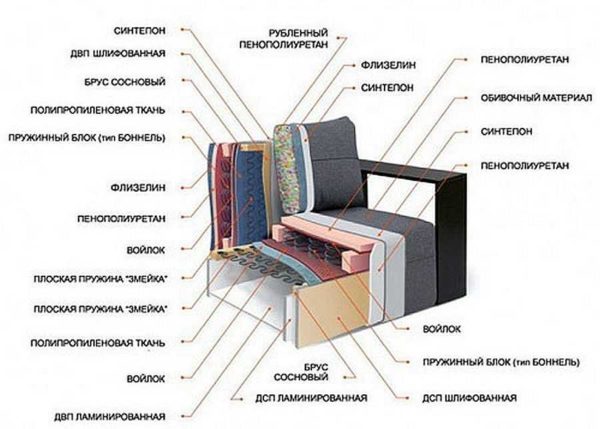
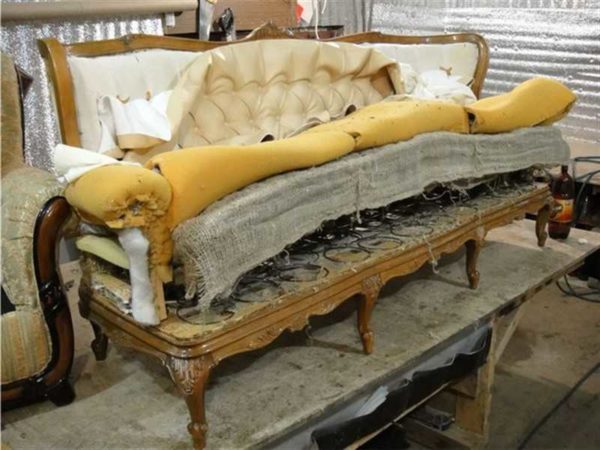
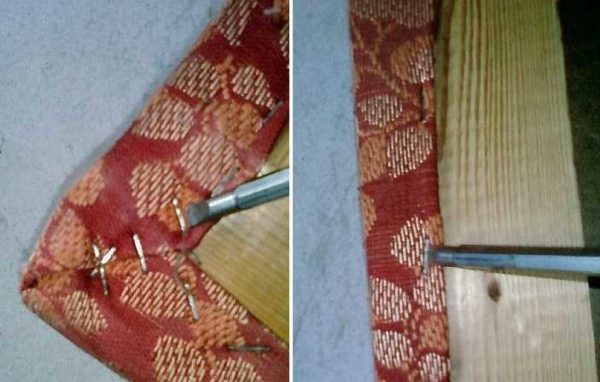
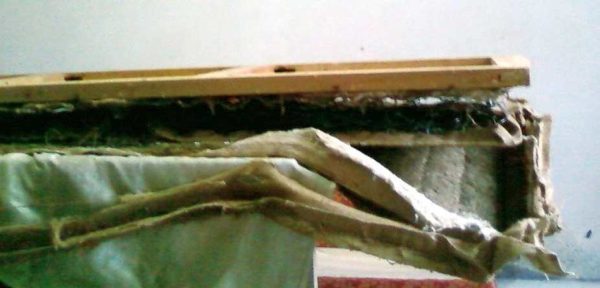
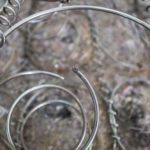

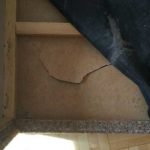
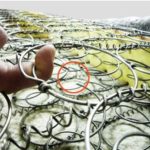

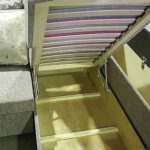
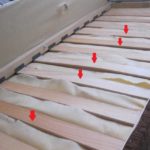
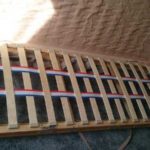
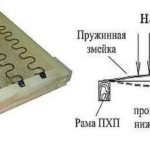
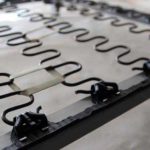
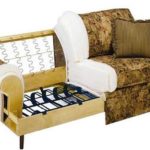
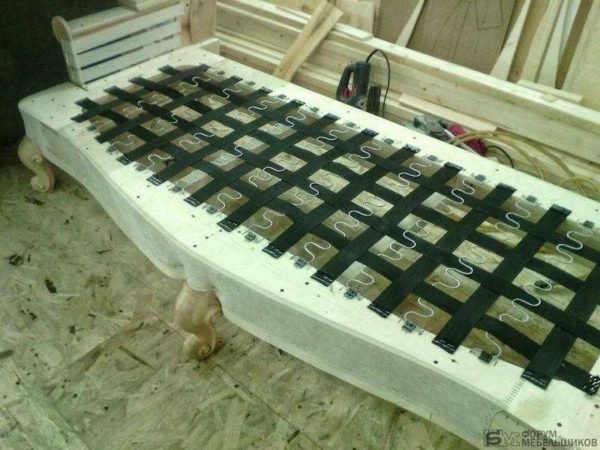
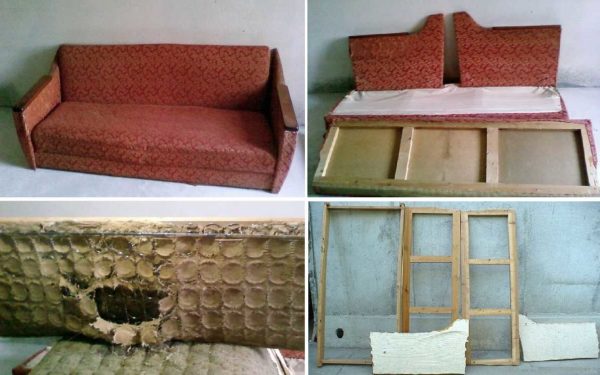
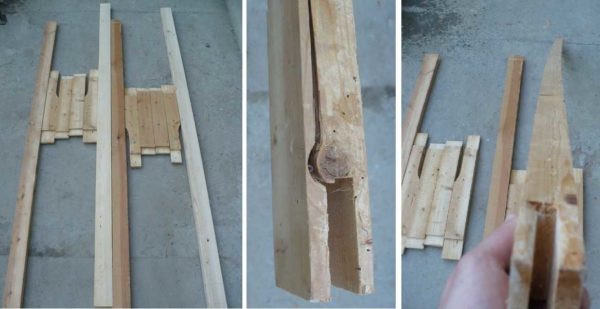
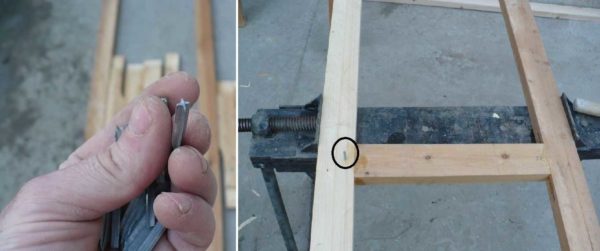
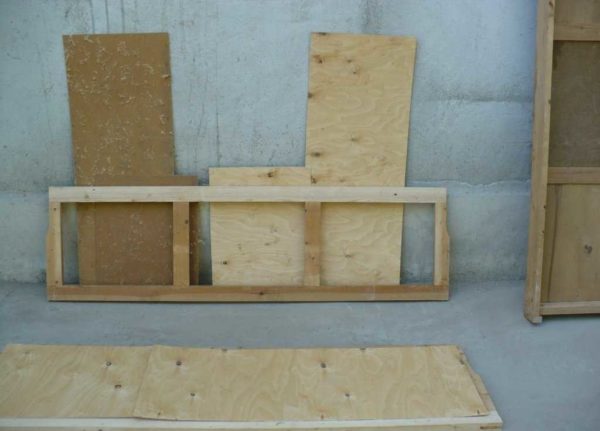
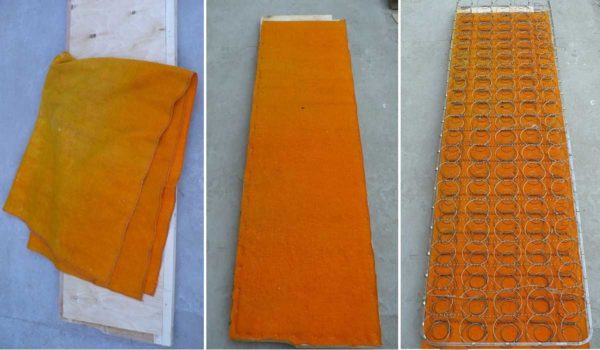
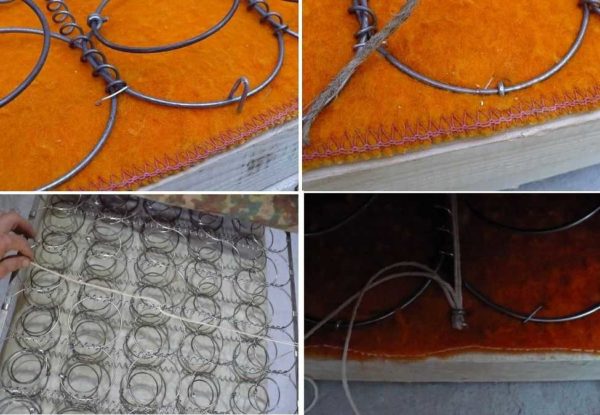
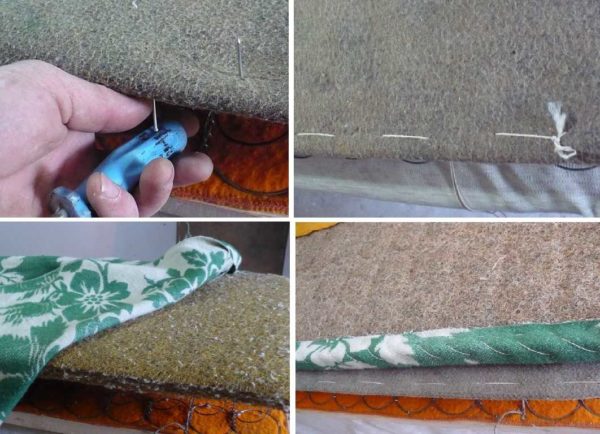
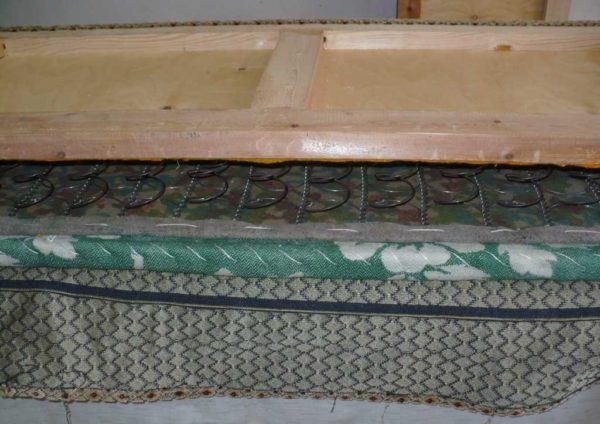
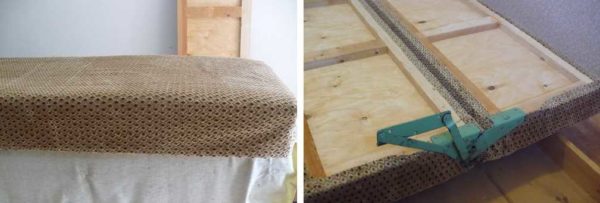
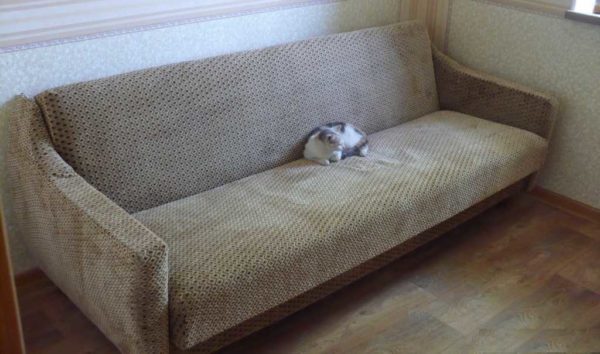

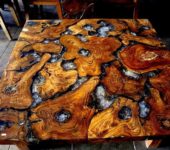

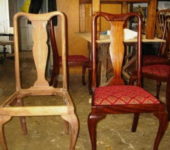






Good article
Thank you!
In detail, of course, we will take as a guide when repairing a sofa with our own hands.